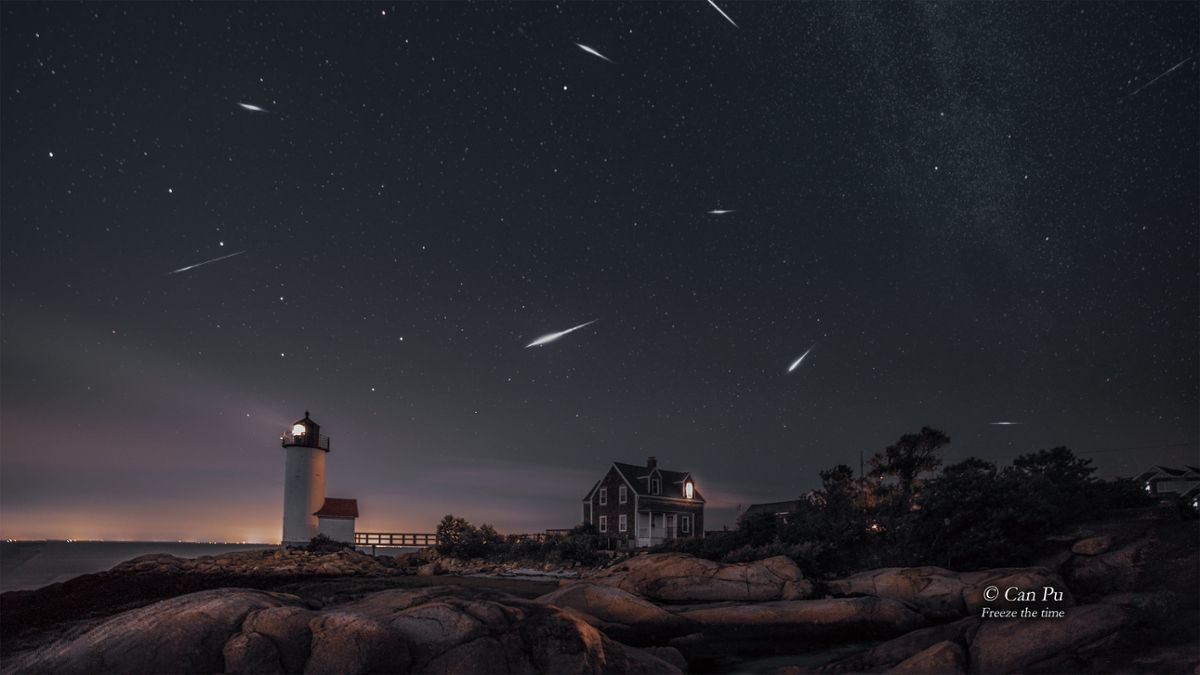If you see a shooting star, make a wish. If you see scores of shooting stars, make a note: you’re witnessing a meteor shower.
When a periodic comet gets heated by the Sun, its icy, rocky body begins disintegrating into gases and dusty particles. The comet and its gritty trail race around the Sun in an elliptical orbit—a stretched trajectory that looks like an oval. When the Earth encounters the trail, called a meteoroid stream, those particles burn up in our atmosphere, showering us with meteors.
If every meteor in a shower is a shooting star, you can make plenty of wishes. And if you really want to maximize your wish-making, you’ll watch for annual showers like the Perseids. These yearly displays happen when the meteoroid stream of Comet Swift–Tuttle intersects with Earth’s orbit. Like clockwork, the Swift–Tuttle’s trail and the Earth collide, creating the Perseids.
The planets circle the Sun counterclockwise, and on a basically flat plane. But comets don’t play by such rules: some go counterclockwise, some go clockwise. And their orbital planes come at all sorts of crazy tilts—a comet’s orbit could be totally perpendicular to Earth’s, or just skewed at a slant.
This means that different meteoroid streams hit Earth from different angles. Some meteor showers happen invisibly during the day, as cometary particles fly at us from the direction of the Sun. But sometimes, like with the Perseids, we get lucky: in this case, the nighttime side of the Earth faces an oncoming meteoroid stream. The stream of particles collides with our planet, creating a wish-making extravaganza.










